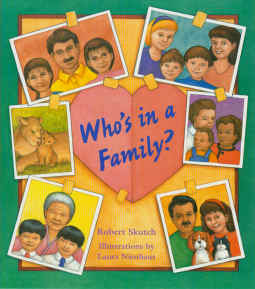I
choose the activity FAMILY PHOTO because I think teachers need to guide
children’s development in the cognitive awareness. Emotional disposition and
behavioral skills are needed to respectfully and effectively learn about
differences. Children can feel comfortably and easily to adapt to differences and
emotionally accept human diversity. This includes age, gender, economic class,
culture, race, disability, body size and sexual orientation. The three goals I
chose are “There are different kinds of families,” “Many different people live
in our community” and “Some physical attributes stay the same and some change”
FAMILY
PHOTOS
2. Make a class book of the children’s families.
3. Repeat the activity with baby pictures and currents photographs of each child
This
goal also is good to help children that came from a multiracial background. For
example a child in class room might be both Latino and Asian, or both white and
black. Some children of color have been adopted into white families. Like all preschoolers,
they are recognizing differences and developing classifications skills. “Teachers
most help interracial children feel good about themselves, their physical
features, and their families. Most of all we must accept and recognize each interracial
child as a UNIQUE INDIVIDUAL.” (York Pg. 50)
The books I choose are:
On
a field trip to an apple farm, the ethnically diverse kids in Mr. Yee’s class
enjoy a creative, rhyming countdown from 20-1 which includes grouping and
simple addition. Fun apple facts are packed into this cheerful book’s end
pages. (Ages
4-8)
The
last reason why I chose this activity is because my family has diversity age,
culture, language, and race. My husband is 18 yrs older than me; we speak
different language, race and cultures. So, as my own experience families can be
combine with different types of components.
This is my Husband and I. These are my children



No comments:
Post a Comment